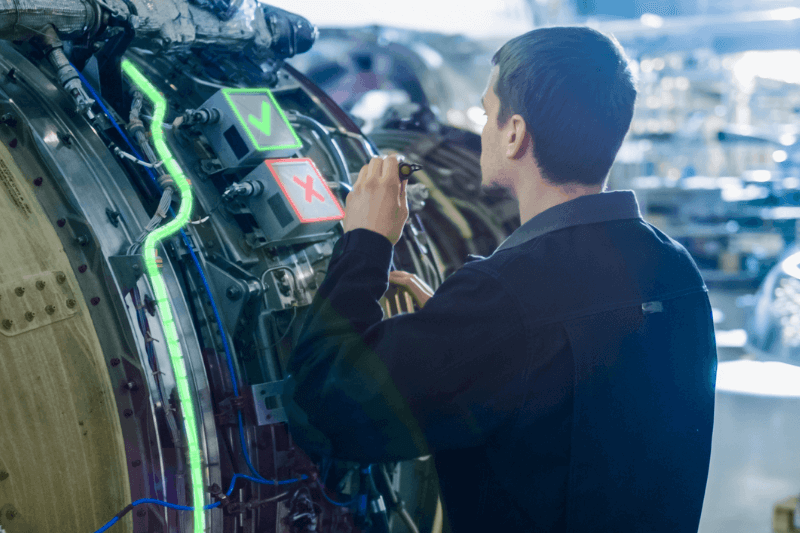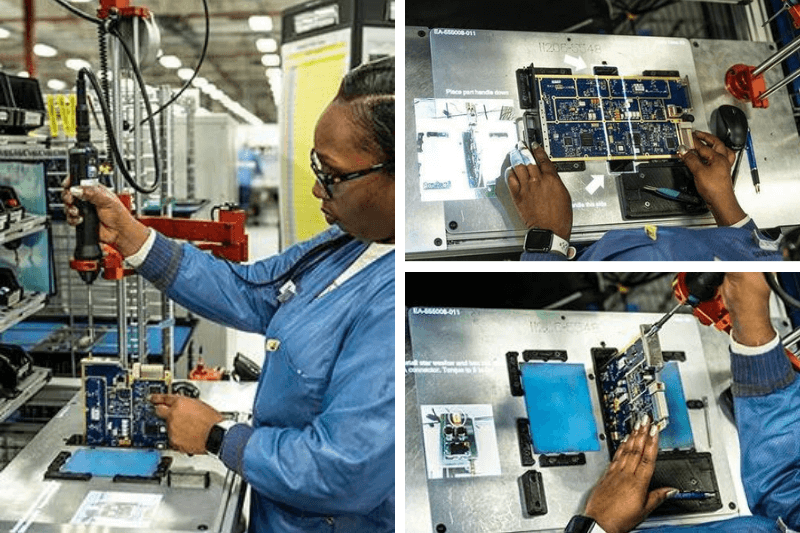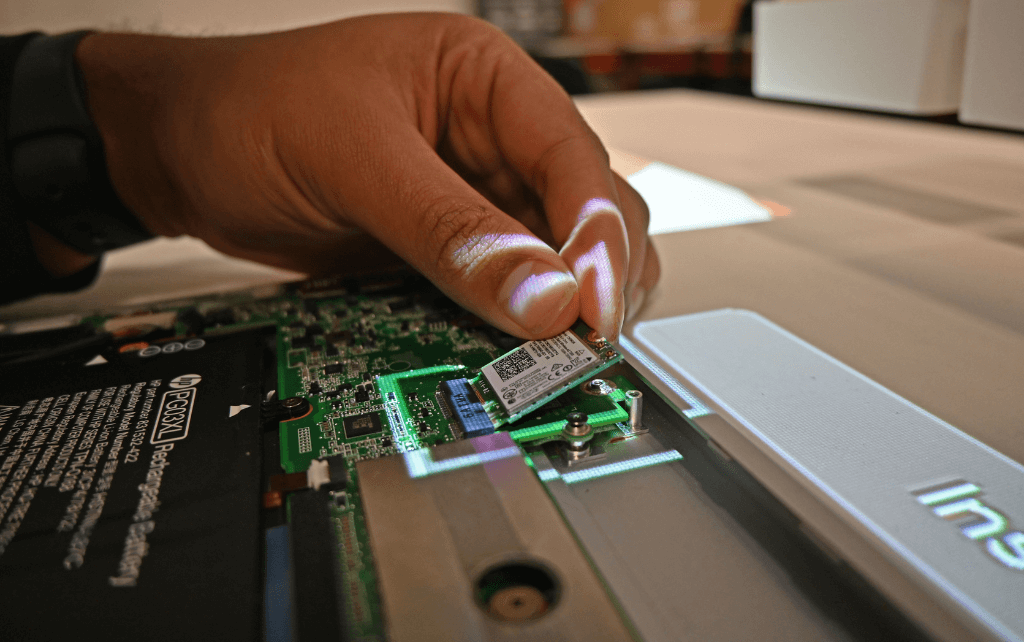
In an industry characterized by low-run, high-precision products, manual processes continue to be a crucial part of many aerospace manufacturing processes. As product innovation soars and builds become more technologically advanced, leading aerospace and defense manufacturers are turning to augmented reality (AR) to help operators keep pace with increasing complexity and achieve higher levels of quality, consistency, and operational success.
Persistent Challenges in Defense & Aerospace Manufacturing
The Need for Error-Free Quality
Unlike many industries where a certain amount of scrap and rework are acceptable, aerospace and defense companies don’t have that luxury. End-user safety concerns require the highest levels of manufacturing precision and error-free quality. And because one bad part can void a whole batch, quality problems can slow down production and quickly translate into cost concerns.
Although the aerospace and defense industry is often first to market with new and emerging technologies, much of the industry is working with outdated methods and approaches to manual assembly. As manufacturers move toward Industry 4.0, aerospace and defense companies need modern assembly methods with end-to-end digitization to ensure quality and consistency in each step.
Builds Are Getting More Complex
As aerospace and defense solutions incorporate more advanced technologies, aerospace products are becoming more complex and the ability to maintain error-free quality is becoming more difficult.
In many cases, workers are assembling parts that have never been assembled before using fresh designs just completed by R&D. Assembling these designs requires extreme precision, which results in longer training times. Add product variations to the mix, and it’s easy to see how training for precision and quality in each variation can become overwhelming for operators.
At the same time, aerospace manufacturers are dealing with labor shortages at every level. With large parts of the workforce retiring, tribal knowledge is walking out the door. Younger employees taking their place may find the learning curve for this industry frustrating and have a hard time understanding how they can contribute, motivating them to seek an industry that’s easier to understand.
RELATED ARTICLE: 3 Effects of the Skills Gap on the Bottom Line
3 Benefits of Augmented Reality for Aerospace and Defense Manufacturing
Augmented reality for aerospace and defense manufacturing can help solve training challenges, close skills gaps, and give manufacturers a reliable way to ensure consistency and quality in every manual process.
1. Standardize Work Instructions
As builds become more complex, aerospace and defense companies are in search of ways to streamline production and error-proof processes. One way to accomplish this is simplifying work instructions in a way that gets the right information to the right place at the right time.
Traditionally, work instructions are published on paper or displayed on computers or tablets. However, each of these methods suffer from inherent challenges.
Paper-based instructions are usually out of date before the ink dries, and in many cases, efforts to consistently update instructions are inefficient. They are also difficult for operators to follow. As workers divert their attention back and forth from the instructions to the work, they can easily become distracted. Not only does this add time to the assembly process, but it also leads to increased opportunities for error, and ultimately, lower yields.
Industrial augmented reality software from LightGuide enables manufacturers to distill pages of complex work instructions into visual cues that can be projected onto any work surface. The technology guides workers with audio and visual prompts, pacing, and direction, so all they need to do is follow the lights. With work instructions visualized on the work surface itself, assembly instructions are much easier and faster to comprehend when compared to reading instructions from a screen or sheet of paper.
The process of updating work instructions becomes easier with augmented reality, too. Engineers can program work instructions directly into LightGuide and deploy changes across the enterprise, providing complete consistency in instructions for every worker in every location.
This virtually eliminates the human error associated with manual processes and ensures consistent quality because the right parts, processes, and sequences are always used.
RELATED ARTICLE: 3 Ways AR Makes It Easier to Write Work Instructions
2. Spot Quality Problems Early

Quality inspections traditionally happen at the end of a process. If one assembly is out of spec, the whole batch can be voided.
A key area for process improvement that industrial augmented reality solutions, like LightGuide, solve is on-the-go inspection. Rather than waiting until the end of an assembly process to inspect aerospace products for quality, LightGuide integrates multiple inspection points into the assembly process to prevent defects rather than simply detecting them.
This no-fault-forward process enables aerospace and defense manufacturers to catch out-of-compliance assemblies in smaller, less expensive parts before they are integrated into larger assemblies. The chances of one bad apple spoiling larger, more expensive assemblies are dramatically reduced.
Following the implementation of LightGuide’s projected AR software, this leading aerospace and defense manufacturer eliminated assembly-related defects and changeover per variant on a line with 17 variants of one product.
One inspection method that’s unique to LightGuide is the ability to capture snapshots of each build: photos taken from overhead cameras during the assembly process that validate the build quality. Snapshots are correlated with the part’s serial number and become associated with each part’s “digital birth certificate,” which is a record of each part as it’s assembled from beginning to end.
This digital birth certificate captures exactly when a part was built, who built it, what time it was built, how long it took to build, the number and status of each quality check, how the assembly maps to required tolerances, and the current location of the part within your manufacturing facility.
Manufacturers can analyze this data to learn more about process efficiency or people efficiency and identify ways to optimize assembly, reduce defects and increase throughput. This gives manufacturers a new pathway to assure customers they can consistently deliver a quality product.
LightGuide’s enterprise-ready AR software also integrates with factory tools and devices, such as digital torque wrenches, and uses the data generated from the tools as another inspection point. For example, torque values can be captured in real-time and correlated with a specific bolt being tightened. That data is also reflected in the part’s digital birth certificate.
RELATED ARTICLES:
Aerospace & Defense Leader Eliminates Defects with AR
The Power of Product Traceability in Manufacturing
3. Simplify Training for Speed

Augmented reality is one of the best tools for training and upskilling workers. It helps companies fill skills gaps and enables manufacturers to get new employees up to speed much more quickly than through the traditional transfer of tribal knowledge, which can be inconsistent, incomplete, or simply not available.
That’s because augmented reality-based training teaches operators how to complete a task correctly every time, effectively eliminating variation and rework by creating a standardized approach to training. This interactive approach to training provides quality guidance and on-the-job support to operators, reducing human error and boosting productivity.
RELATED ARTICLES:
How to Use Augmented Reality to Upskill Workers
The Digitally Connected Worker: Your Manufacturing Workforce of the Future
Manage the Challenges of Defense & Aerospace Manufacturing with Confidence
Augmented reality solutions designed for aerospace and defense manufacturing can help add precision and quality to each manual assembly process by simplifying work instructions, inspecting for quality in real time, and accelerating training to quickly fill skills gaps. In addition, data captured throughout the assembly process can be used to optimize processes. The results add up to more consistent quality, faster assembly and training times, and lower expenses due to quality issues.
Interested in learning how AR solutions from LightGuide can improve your aerospace manufacturing processes? Contact us to schedule a consultation with one of our AR experts.


